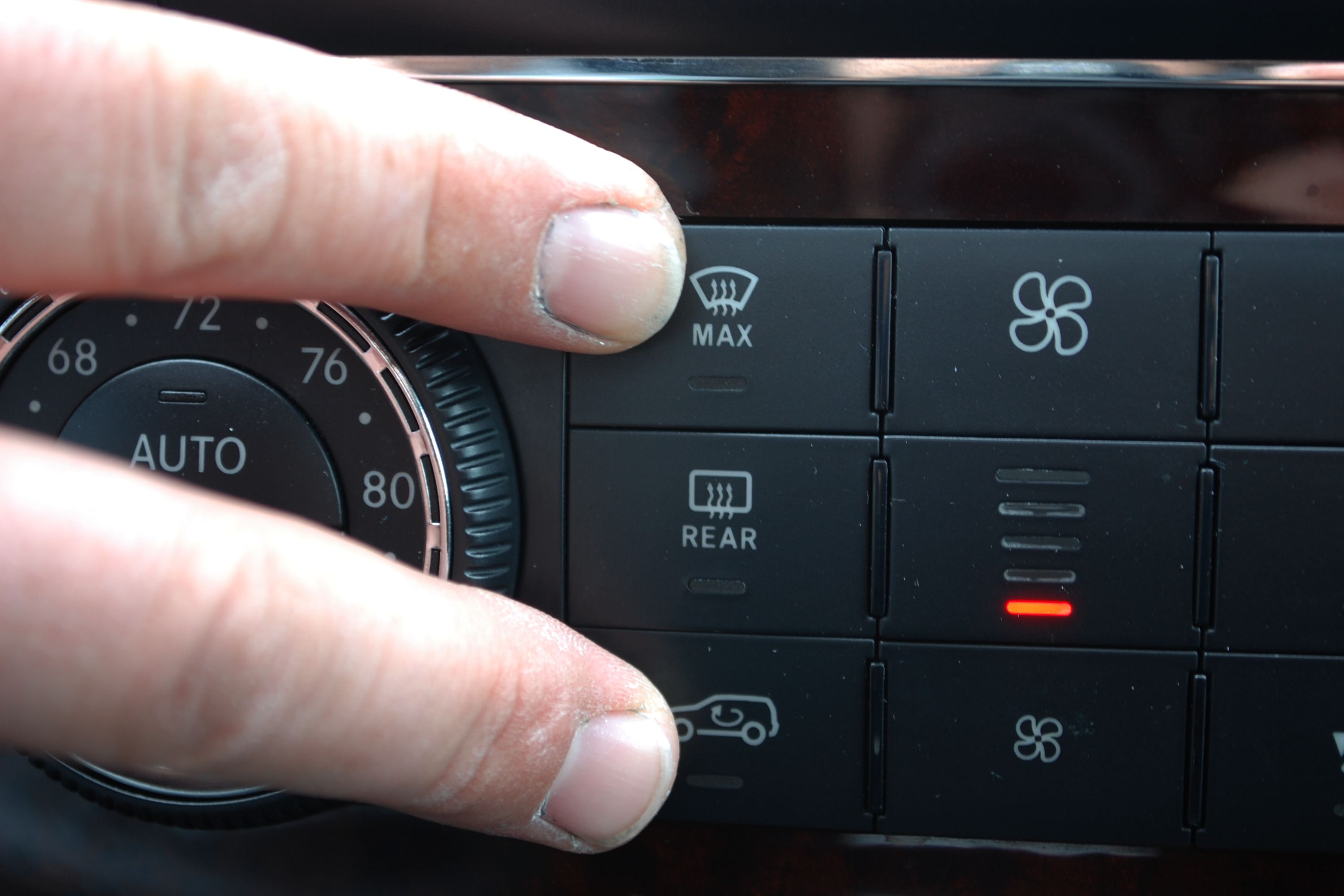

Articles
How To Reset Engine Hot AC Off
Modified: May 6, 2024
Learn how to reset your engine's hot AC off feature with our informative articles. Find step-by-step instructions and troubleshooting tips to keep your car running smoothly.
(Many of the links in this article redirect to a specific reviewed product. Your purchase of these products through affiliate links helps to generate commission for Storables.com, at no extra cost. Learn more)
Introduction
The Engine Hot AC Off warning is a common issue that many drivers may encounter in their vehicles. This warning is an indication that the engine is running hotter than normal and the automatic climate control system has been disabled to prevent additional strain on the engine. Seeing this warning can be alarming for drivers, but it is important to address the issue promptly to avoid further damage to the engine.
In this article, we will explore the Engine Hot AC Off warning in detail, including its meaning and the importance of resetting it. We will also provide step-by-step instructions on how to reset the warning, as well as tips on testing the reset to ensure that the issue has been resolved.
Understanding the Engine Hot AC Off warning is the first step in addressing this issue. When the engine runs hotter than normal, it can lead to various problems, including reduced engine performance, increased emissions, and potential damage to engine components. To protect the engine from further strain, the automatic climate control system is disabled, indicated by the Engine Hot AC Off warning. This means that the air conditioning system will not function until the engine temperature returns to normal levels.
Now that we have a basic understanding of the warning, let’s delve into why it is important to reset the Engine Hot AC Off and how it can be done effectively. By resetting the warning, drivers can ensure that the cooling system is working properly, preventing any potential cooling-related issues and maintaining comfortable driving conditions.
Stay tuned as we explore the steps to reset the Engine Hot AC Off warning and provide guidance on testing the reset to ensure that the issue has been resolved. By following these instructions, drivers can regain control of their automatic climate control system and enjoy a comfortable driving experience once again.
Key Takeaways:
- Resetting the Engine Hot AC Off warning is crucial for preventing engine strain and restoring optimal performance, ensuring a comfortable driving experience.
- Testing the reset process verifies successful repair, allowing drivers to enjoy a fully operational AC system and a smooth, efficient engine.
Read more: How To Reset Hot Tub
Understanding the Engine Hot AC Off Warning
The Engine Hot AC Off warning is a notification that appears on a vehicle’s dashboard when the engine is operating at an elevated temperature. This warning serves as an important indicator that the automatic climate control system has been temporarily disabled to alleviate strain on the engine.
When a vehicle’s engine overheats, it can lead to various issues such as reduced engine performance, increased emissions, and potential damage to engine components. To prevent further strain on the engine, the automatic climate control system is disabled, resulting in the Engine Hot AC Off warning.
The automatic climate control system, which includes the air conditioning (AC), relies on the engine’s cooling system to maintain a stable operating temperature. When the engine exceeds the normal temperature range, the heat produced can impact the cooling system’s effectiveness, potentially leading to further overheating issues. To prevent this, the Engine Hot AC Off warning is triggered, indicating that the AC system has been temporarily disabled.
It is important for drivers to take the Engine Hot AC Off warning seriously and address the underlying issue promptly. The warning serves as a safeguard to protect the engine from further damage and prevent potential breakdowns. Ignoring the warning and continuing to drive with a hot engine can exacerbate the problem, leading to costly repairs and extended vehicle downtime.
If you encounter the Engine Hot AC Off warning while driving, it is essential to take immediate steps to reduce the engine temperature and protect your vehicle. This can be done by pulling over to a safe location and turning off the engine. Allowing the engine to cool down for a few minutes can help dissipate the excess heat and lower the engine’s operating temperature.
Once the engine has cooled down, it is recommended to inspect the vehicle’s cooling system for any signs of leakage or other issues. A malfunctioning cooling system can contribute to engine overheating, and addressing these underlying problems is crucial to prevent the recurrence of the Engine Hot AC Off warning.
In the following sections, we will discuss the importance of resetting the Engine Hot AC Off warning and provide step-by-step instructions on how to do it effectively. By understanding the warning and taking appropriate measures, you can ensure the optimal performance of your vehicle’s engine and maintain a comfortable driving experience.
Importance of Resetting the Engine Hot AC Off
Resetting the Engine Hot AC Off warning is a crucial step in resolving the underlying issue and restoring the functionality of your vehicle’s automatic climate control system. Ignoring or neglecting the warning can lead to prolonged engine overheating, potential damage to engine components, and continued discomfort while driving.
Here are some key reasons why resetting the Engine Hot AC Off warning is important:
- Prevents further engine damage: When the engine is running at an elevated temperature, it can cause stress on various engine components, including the radiator, coolant system, and gaskets. By addressing the issue promptly and resetting the warning, you can prevent further damage to these critical parts and avoid costly repairs.
- Restores optimal engine performance: Overheating can negatively impact the engine’s performance, resulting in reduced power, decreased fuel efficiency, and potential drivability issues. Resetting the Engine Hot AC Off warning allows the engine to return to its optimal operating temperature, ensuring smooth and efficient performance.
- Ensures comfort while driving: The Engine Hot AC Off warning indicates that the automatic climate control system has been disabled to alleviate strain on the engine. By resetting the warning, the AC system is reactivated, allowing you to enjoy a comfortable driving experience, especially during hot weather conditions.
- Verifies successful repair: Resetting the Engine Hot AC Off warning can serve as a test to ensure that any necessary repairs or maintenance have effectively addressed the underlying issue. By testing the reset process and monitoring the engine temperature, you can confirm that the problem has been resolved and prevent future occurrences of the warning.
Now that we understand the importance of resetting the Engine Hot AC Off warning, let’s proceed to the step-by-step instructions on how to do it effectively. Following these steps will enable you to reset the warning and restore the proper functioning of your vehicle’s automatic climate control system.
Steps to Reset the Engine Hot AC Off
Resetting the Engine Hot AC Off warning can typically be done following a few simple steps. It is important to note that the specific procedures may vary depending on the make and model of your vehicle. Refer to your vehicle’s manual for detailed instructions tailored to your automobile.
- Step 1: Turn the Ignition Off
- Step 2: Wait for a Few Minutes
- Step 3: Open the Hood
- Step 4: Locate the Battery
- Step 5: Disconnect the Negative Terminal
- Step 6: Reconnect the Negative Terminal
- Step 7: Close the Hood
Ensure that your vehicle is parked and the engine is turned off. Engaging the ignition switch is necessary to reset the Engine Hot AC Off warning effectively.
Allow the engine to cool down for a few minutes. This step will give the engine time to dissipate any excess heat and reduce its operating temperature.
Pop the hood of your vehicle and secure it properly. Access to the engine compartment is necessary to locate and perform the necessary steps to reset the Engine Hot AC Off warning.
Identify the location of your vehicle’s battery. In most cases, it is located in the engine compartment, either on the driver or passenger side.
Using the appropriate tools, loosen and remove the negative terminal connection from the battery. The negative terminal is typically marked with a “-” symbol.
After a few minutes, reconnect the negative terminal to the battery. Ensure that it is securely fastened to establish a proper connection.
Lower the hood and secure it properly. Ensure that it is firmly closed to prevent any accidents or damage while driving.
By following these steps, you can effectively reset the Engine Hot AC Off warning and restore the functionality of your automatic climate control system. However, it is important to note that these steps may not resolve the underlying issue causing the warning. If the warning persists or reoccurs frequently, it is recommended to consult a qualified mechanic or dealership for further diagnosis and repairs.
Step 1: Turn the Ignition Off
The first step in resetting the Engine Hot AC Off warning is to ensure that your vehicle’s ignition is turned off. This is a crucial step to ensure your safety and prevent any accidental engine starts while performing the reset process.
Follow these steps to turn off the ignition:
- Park your vehicle: Find a safe and secure location to park your vehicle. Ensure that you are away from traffic and on level ground.
- Pull the handbrake: Engage the handbrake or parking brake to keep your vehicle stationary and prevent any accidental movement.
- Put the gear in “Park” (automatic transmission) or neutral (manual transmission): If your vehicle has an automatic transmission, make sure the gear selector is in the “Park” position. For manual transmissions, shift the gear lever into neutral.
- Turn off all electrical systems: Before turning off the ignition, ensure that all electrical systems, such as headlights, radio, and interior lights, are switched off. This will prevent any battery drain and allow a clean reset of the Engine Hot AC Off warning.
- Turn the key or push the ignition button to shut off the engine: Depending on your vehicle’s ignition system, use the key to turn the ignition switch to the “Off” position or press the ignition button to shut off the engine. This will completely power down the vehicle’s electrical systems and stop the engine operation.
Once the ignition is turned off, the vehicle is in a safe and inactive state, preparing it for the next steps of the Engine Hot AC Off warning reset process. Ensure that the engine remains off during the entire duration of the reset process to avoid any potential hazards or accidents.
Now that you have successfully turned off the ignition, you are ready to proceed to the next step in resetting the Engine Hot AC Off warning.
Step 2: Wait for a Few Minutes
After turning off the ignition, it is essential to allow your vehicle’s engine to cool down for a few minutes before proceeding with the Engine Hot AC Off reset process. This waiting period is crucial to dissipate excess heat and lower the engine’s operating temperature.
Here’s what you should do while waiting for the engine to cool down:
- Remain near your vehicle: Stay in close proximity to your vehicle while waiting for the engine to cool down. This will allow you to monitor any changes or potential issues that may arise.
- Observe the temperature gauge: Keep an eye on the temperature gauge on your vehicle’s instrument cluster. It will provide you with an indication of the current engine temperature. Wait until the gauge drops to a normal operating temperature range before proceeding.
- Inspect for any signs of overheating: While waiting for the engine to cool, visually inspect the engine compartment for any signs of overheating, such as steam or a burning smell. If you notice any of these signs, it is advisable to consult a professional mechanic to diagnose and resolve the underlying issue before proceeding.
- Take precautions: During this waiting period, it is important to exercise caution and adhere to safety guidelines. Avoid touching any hot engine components and keep a safe distance from the engine to prevent burns or injuries.
- Plan your next steps: Make use of this waiting time to familiarize yourself with the upcoming steps of the Engine Hot AC Off reset process. Review the instructions and gather any necessary tools or materials required for the next stages of the reset process.
By patiently waiting for a few minutes, you allow the engine to cool down and reduce its temperature. This is a vital step in the Engine Hot AC Off reset process as it ensures the effectiveness of the subsequent steps and helps prevent any potential accidents or further damage to engine components.
Once you have allowed sufficient time for the engine to cool down, you can proceed to the next step of the reset process with confidence.
Step 3: Open the Hood
Now that you have allowed the engine to cool down for a few minutes, it’s time to proceed to the next step in resetting the Engine Hot AC Off warning: opening the hood of your vehicle. Opening the hood will provide you with access to the engine compartment, allowing you to perform the necessary steps to reset the warning.
Follow these steps to open the hood of your vehicle safely:
- Locate the hood release lever: Start by locating the hood release lever inside your vehicle. In most vehicles, you can find it underneath the dashboard, near the driver’s side footwell, or on the side of the driver’s door panel. Refer to your vehicle owner’s manual if you are unsure of its exact location.
- Pull the hood release lever: Once you have located the hood release lever, pull it firmly to disengage the hood latch. You will typically hear a click, indicating that the hood is now unlocked.
- Move to the front of the vehicle: Exit the vehicle and move to the front of your vehicle, where the hood is located.
- Locate the hood safety latch: Once you are in front of the vehicle, look for the hood safety latch, usually positioned near the center of the vehicle’s front grille. This latch acts as an additional safety measure to prevent the hood from accidentally opening while driving.
- Release the hood safety latch: Push or pull the hood safety latch to release it. You may need to press it down or pull it towards you, depending on your vehicle’s design. As you release the safety latch, you will feel it disengage, allowing the hood to open slightly.
- Lift the hood: With the hood safety latch released, lift the hood fully and prop it open using the designated hood support rod or strut. Make sure it is securely latched in the open position to provide unimpeded access to the engine compartment.
Opening the hood gives you the necessary access to the engine compartment, allowing you to locate and perform the subsequent steps of resetting the Engine Hot AC Off warning. Ensure that the hood is fully opened and securely fastened by the hood support rod or strut before proceeding.
Now that you have successfully opened the hood, you are ready to move on to the next steps in resetting the Engine Hot AC Off warning.
Step 4: Locate the Battery
With the hood open, the next step in resetting the Engine Hot AC Off warning is to locate the battery of your vehicle. The battery is an essential component that provides electrical power to start the engine and supply energy to various electrical systems in the vehicle.
Follow these steps to locate the battery in your vehicle:
- Inspect the engine compartment: Take a moment to visually inspect the engine compartment. Look for any obvious signs or labels that indicate the location of the battery.
- Refer to your vehicle owner’s manual: If you are having trouble locating the battery, consult your vehicle’s owner’s manual. It typically contains detailed information and diagrams that illustrate the battery’s position and relevant components.
- Look for a rectangular-shaped box: In most vehicles, the battery is housed in a rectangular-shaped plastic or metal box. It is commonly located near the front portion of the engine compartment, either on the driver’s side or passenger’s side.
- Check for battery-related labels or markings: Manufacturers often label the battery or its housing with symbols or identifying marks. Look for labels that display the word “Battery,” “+” or “-” signs, or other battery-related symbols.
- Identify the battery terminals: Once you have located the battery, familiarize yourself with its terminals. The battery will have two terminals — a positive terminal (+) and a negative terminal (-). These terminals are crucial for connecting and disconnecting electrical connections.
It is essential to locate the battery accurately, as it plays a significant role in the Engine Hot AC Off reset process. Having a clear understanding of its position will enable you to perform the subsequent steps correctly and effectively.
Remember to exercise caution when working near the battery. Avoid touching the terminals with bare hands or tools, as they carry electrical charge and could cause injury or damage if mishandled.
Now that you have successfully located the battery, you’re ready to proceed to the next step in resetting the Engine Hot AC Off warning.
If your engine is hot and the AC is off, try turning off the AC and running the fan on high to help cool the engine. If the problem persists, have the cooling system checked by a professional.
Step 5: Disconnect the Negative Terminal
Now that you have located the battery, the next step in resetting the Engine Hot AC Off warning is to disconnect the negative terminal. The negative terminal is typically indicated by the “-” symbol and is an essential part of the battery’s electrical circuit.
Follow these steps to disconnect the negative terminal:
- Ensure safety precautions: Before working with the battery, ensure that you are wearing appropriate safety gear, such as gloves and safety glasses, to protect yourself from any potential hazards.
- Identify the negative terminal: Locate the negative terminal on the battery. It is usually labeled with a “-” symbol or the letters “NEG.”
- Loosen the negative terminal connection: Using an appropriate-sized wrench or socket, loosen the nut or bolt that secures the negative terminal connection to the battery.
- Disconnect the negative terminal: Once the nut or bolt has been loosened, carefully remove the negative terminal connector from the battery post by pulling it straight off. Take note of any insulating covers or rubber boots that may be present on the negative terminal.
- Secure the disconnected terminal: To avoid any accidental reconnection, ensure that the disconnected negative terminal is positioned away from the battery and any metal surfaces. You can use a piece of non-conductive material, such as plastic or a rubber protective cover, to cover the disconnected terminal temporarily.
By disconnecting the negative terminal, you are breaking the electrical circuit between the battery and the vehicle’s systems. This step is necessary to perform the reset process effectively without any risk of electrical shocks or damage.
Remember to handle the disconnected negative terminal with care and avoid touching it to any metal surfaces or other electrical connections. Be mindful of any remaining electrical charges in the system, as certain vehicle components may retain some power even with the battery disconnected.
Read more: How To Reset My AC Unit
Step 6: Reconnect the Negative Terminal
After disconnecting the negative terminal in the previous step, it is important to reconnect it properly to complete the Engine Hot AC Off warning reset process. Reconnecting the negative terminal will restore the electrical circuit and allow the necessary power flow to the vehicle’s systems.
Follow these steps to reconnect the negative terminal:
- Inspect the negative terminal: Before reconnecting the negative terminal, visually inspect it for any signs of damage, corrosion, or loose connections. If you notice any issues, address them accordingly before proceeding.
- Align the negative terminal connector: Align the negative terminal connector with the battery post. Ensure that the connector is properly positioned and aligned with the negative terminal.
- Press the negative terminal connector onto the battery post: Firmly press the negative terminal connector onto the battery post. Apply pressure evenly to ensure a secure connection. You may hear a slight click or feel a slight resistance when the connector is properly seated.
- Tighten the negative terminal connection: Using your wrench or socket, tighten the nut or bolt that secures the negative terminal connector to the battery post. Ensure that it is tightened securely, but be careful not to overtighten, as it may damage the terminal or battery post.
- Inspect the connection: Once the negative terminal is securely connected, visually inspect the connection to ensure that it is tight and free from any looseness or movement. Verify that the negative terminal is properly aligned with the battery post.
Reconnecting the negative terminal properly is crucial to establish a reliable electrical connection and ensure the effective operation of your vehicle’s systems. A secure and tight connection will facilitate the reset process for the Engine Hot AC Off warning.
Remember to take precautions while working with the battery, as it carries electrical energy. Avoid touching any metal surfaces or electrical connections with the disconnected negative terminal. Handle the terminal carefully to prevent accidental reconnection before the reset process is completed.
Now that you have successfully reconnected the negative terminal, you are ready to move on to the final step in the Engine Hot AC Off warning reset process.
Step 7: Close the Hood
Now that you have completed the necessary steps to reset the Engine Hot AC Off warning, it is time to close the hood of your vehicle. Closing the hood securely will ensure proper alignment and protection of the engine compartment.
Follow these steps to close the hood:
- Remove any tools or materials: Before closing the hood, ensure that you have removed any tools, gloves, or materials from the engine compartment. Leaving any items behind could interfere with the proper closing and latching of the hood.
- Hold the hood firmly: Use both hands to hold the hood securely from the underside. Avoid placing your hands or fingers near the edges of the hood to prevent any pinching or injuries.
- Gently lower the hood: Lower the hood slowly and carefully, aligning it with the latch mechanism. Ensure that the hood is positioned correctly and aligned with the front portion of the vehicle.
- Release the hood: Once the hood is properly aligned, release it slowly and allow it to close under its own weight. You should hear a distinct “click” sound as the hood latches securely.
- Double-check the hood latch: After closing the hood, give it a gentle tug to ensure that it is securely latched. The hood should not move or open easily when you tug on it.
By properly closing the hood, you ensure the safety and integrity of the engine compartment. It also signifies the completion of the Engine Hot AC Off reset process, allowing you to move on to the next step: testing the reset.
Testing the Engine Hot AC Off Reset
Testing the reset of the Engine Hot AC Off warning is an essential step to verify that the reset process was successful and that the AC system is functioning as intended. Follow these steps to test the reset:
- Start the engine: Turn the ignition key or press the ignition button to start the engine. Allow it to idle for a few moments.
- Check for warning lights: Observe the dashboard for any warning lights or messages. Ensure that the Engine Hot AC Off warning light is no longer illuminated. If the warning light persists, it indicates that there may still be an underlying issue that needs to be addressed.
- Test the AC system: Switch on the AC system and adjust the temperature settings. Ensure that cold air is being emitted from the vents and that the system responds to changes in temperature and fan speed controls.
- Monitor the engine temperature: Keep an eye on the engine temperature gauge or any temperature indicators. Ensure that the engine remains within the normal operating temperature range even during extended periods of driving or idling.
If the Engine Hot AC Off warning does not reappear, and the AC system functions properly while the engine temperature remains stable, it confirms that the reset process was successful. However, if the warning persists or reoccurs frequently, it is advisable to consult a qualified mechanic or dealership for further diagnosis and necessary repairs.
By testing the Engine Hot AC Off reset, you can have confidence in the functionality of your automatic climate control system and enjoy a comfortable driving experience.
Step 1: Start the Engine
After completing the necessary steps to reset the Engine Hot AC Off warning, the first step in testing the reset is to start the engine of your vehicle. Starting the engine will allow you to observe its behavior and ensure that it starts smoothly without any issues.
Follow these steps to start the engine:
- Ensure the vehicle is in park or neutral: If your vehicle has an automatic transmission, ensure that the gear selector is in the “Park” position. For manual transmissions, make sure the gear is in neutral. This helps prevent any unintended movement of the vehicle while starting the engine.
- Turn the ignition key or press the ignition button: Insert the key into the ignition cylinder (if applicable) and turn it clockwise. If your vehicle has a push-button start, simply press the ignition button. These actions will activate the vehicle’s electrical systems and start the engine.
- Listen for engine startup: As you turn the ignition key or press the ignition button, listen for the sound of the engine starting. A healthy engine will typically start smoothly and without any hesitation. If you notice any unusual sounds or difficulty starting, it may indicate an underlying issue that needs attention.
- Observe dashboard warning lights: Once the engine is running, take note of any warning lights or messages that appear on the dashboard. Ensure that the Engine Hot AC Off warning light is not illuminated. If the warning light persists, it may indicate that the reset was unsuccessful or that there is still an ongoing issue.
Starting the engine is the initial step in testing the reset of the Engine Hot AC Off warning. It allows you to assess the engine’s functionality and determine whether the reset process was effective in resolving the issue. Listening for any abnormal sounds and checking the dashboard for warning lights will provide valuable insights into the engine’s condition.
If the engine starts smoothly without any warning lights related to the Engine Hot AC Off warning, you can proceed to the next step to further evaluate the reset.
Read more: How To Reset AC After Power Outage
Step 2: Check for Warning Lights
After starting the engine, the next step in testing the reset of the Engine Hot AC Off warning is to check the dashboard for any warning lights or messages. These warning lights provide important indications about the status of various vehicle systems, including the automatic climate control system.
Follow these steps to check for warning lights:
- Observe the dashboard: Take a moment to carefully observe the dashboard display. Look for any illuminated warning lights or messages that may be present.
- Pay attention to the Engine Hot AC Off warning light: Specifically, check if the Engine Hot AC Off warning light is illuminated or if there is any indication that the AC system is still disabled. The absence of the warning light or message indicates that the reset process was successful.
- Note any other warning lights: In addition to the Engine Hot AC Off warning light, pay attention to any other warning lights that may be illuminated. These lights may indicate other issues or malfunctions in the vehicle systems. Refer to your vehicle’s owner’s manual for the meaning of specific warning lights.
- Assess the warning light status: If the Engine Hot AC Off warning light and other warning lights remain off, it is a positive sign that the reset was effective, and the automatic climate control system is functioning as intended. However, if any warning lights persist or illuminate, it may suggest there is an unresolved issue that requires further attention.
- Take note of warning light behavior: Besides the presence of warning lights, also pay attention to their behavior. If any warning lights flicker, flash, or remain on even with normal engine operation, it could indicate a potential electrical problem or a faulty sensor.
Checking for warning lights on the dashboard helps ensure that the Engine Hot AC Off warning has been successfully reset. Absence of the Engine Hot AC Off warning light and any other warning lights related to the automatic climate control system indicates that the reset process was effective.
If you notice that all the warning lights are functioning properly and there are no indications of unresolved issues, you can proceed to the next step to test the functionality of the AC system itself.
Step 3: Test the AC System
After checking for warning lights and confirming that the Engine Hot AC Off warning has been reset, the next step is to test the functionality of the air conditioning (AC) system. This step ensures that the AC system is operational and able to provide the desired cooling effect within the vehicle.
Follow these steps to test the AC system:
- Adjust the temperature controls: Set the temperature controls to a level that would normally provide a comfortable and cool environment. This may involve adjusting the temperature dial or pressing the appropriate buttons on the AC control panel.
- Switch on the AC system: Press the AC button or select the AC mode to activate the system. This ensures that the AC compressor engages and starts producing cool air.
- Observe the airflow and temperature: Pay attention to the airflow and temperature coming out of the vents. The AC system should provide a steady and consistent flow of cold air at the desired temperature.
- Adjust the fan speed: Test the fan speed control and ensure that increasing or decreasing the fan speed has the expected impact on the airflow. The fan should operate smoothly and be able to provide various levels of air circulation.
- Listen for any abnormal sounds: While the AC system operates, listen for any unusual noises such as rattling, grinding, or squealing. Unusual sounds may indicate a problem with the AC compressor or other components that require further inspection.
Testing the AC system ensures that the reset of the Engine Hot AC Off warning has effectively restored the functionality of the automatic climate control system. By checking the airflow, temperature, fan speed, and listening for any abnormal sounds, you can gauge the overall performance of the AC system.
If the AC system is functioning correctly, providing cold air at the desired temperature without any unusual noises, then the reset process has been successful in resolving the Engine Hot AC Off warning. You can enjoy the comfort of a fully operational air conditioning system while driving.
Conclusion
Resetting the Engine Hot AC Off warning is crucial for restoring the functionality of the automatic climate control system in your vehicle. By following the step-by-step instructions outlined in this article, you can effectively reset the warning and ensure that the AC system operates optimally.
Understanding the Engine Hot AC Off warning, the importance of resetting it, and the subsequent steps involved in the reset process are essential for maintaining a comfortable driving experience and preventing further damage to the engine. By taking the time to properly reset the warning and test the AC system, you can ensure that your vehicle is in good working condition.
If the Engine Hot AC Off warning persists or reoccurs frequently even after attempting the reset process, it is recommended to seek professional assistance from a qualified mechanic or consult your vehicle’s dealership. Ongoing issues may require further diagnosis and repairs to address any underlying problems.
Remember to refer to your vehicle’s owner’s manual for specific instructions tailored to your vehicle’s make and model. Adhering to safety precautions and seeking professional help when needed will help keep your vehicle running smoothly and ensure a comfortable driving experience in all weather conditions.
Once you've mastered resetting your Engine Hot AC Off, why not turn your attention to optimizing your vehicle's air conditioning system? Our upcoming piece on amazing AC systems for 2024 offers a sneak peek into innovative cooling technologies that promise enhanced comfort and efficiency. Whether you're upgrading or just curious about the latest trends in automotive AC systems, this article is perfect for staying ahead of the curve.
Frequently Asked Questions about How To Reset Engine Hot AC Off
Was this page helpful?
At Storables.com, we guarantee accurate and reliable information. Our content, validated by Expert Board Contributors, is crafted following stringent Editorial Policies. We're committed to providing you with well-researched, expert-backed insights for all your informational needs.

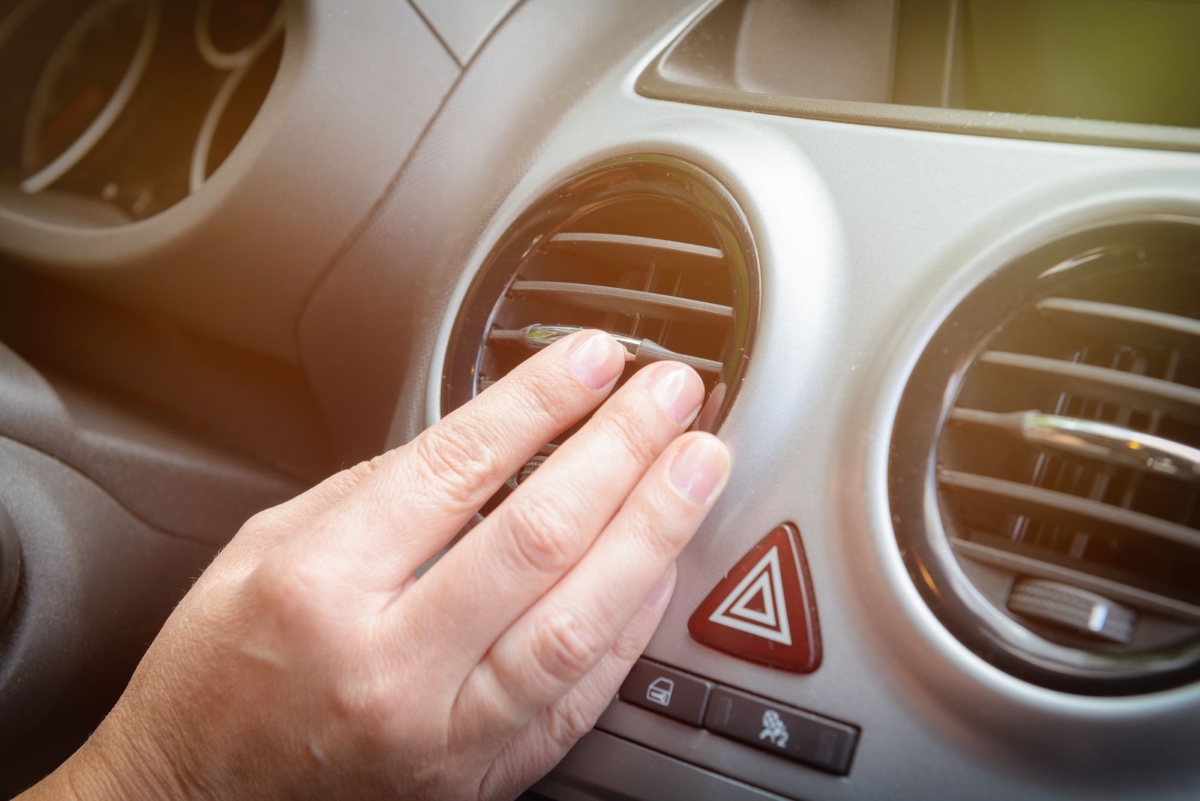




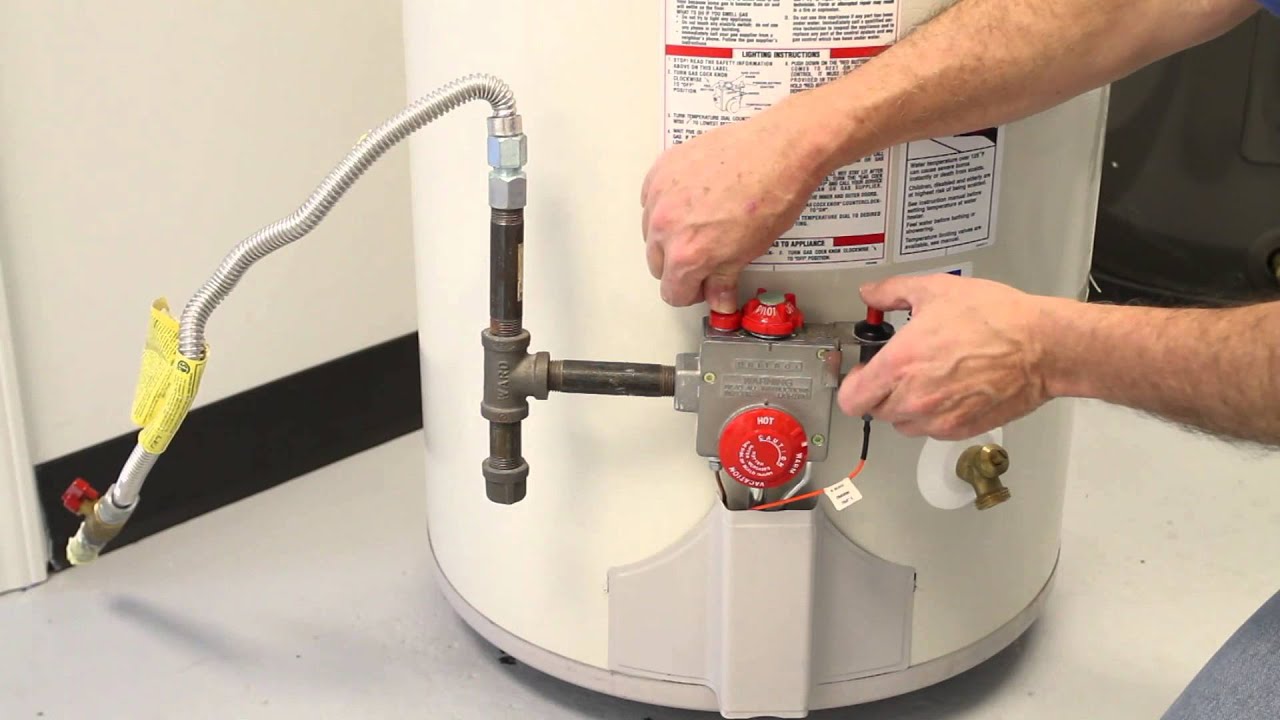

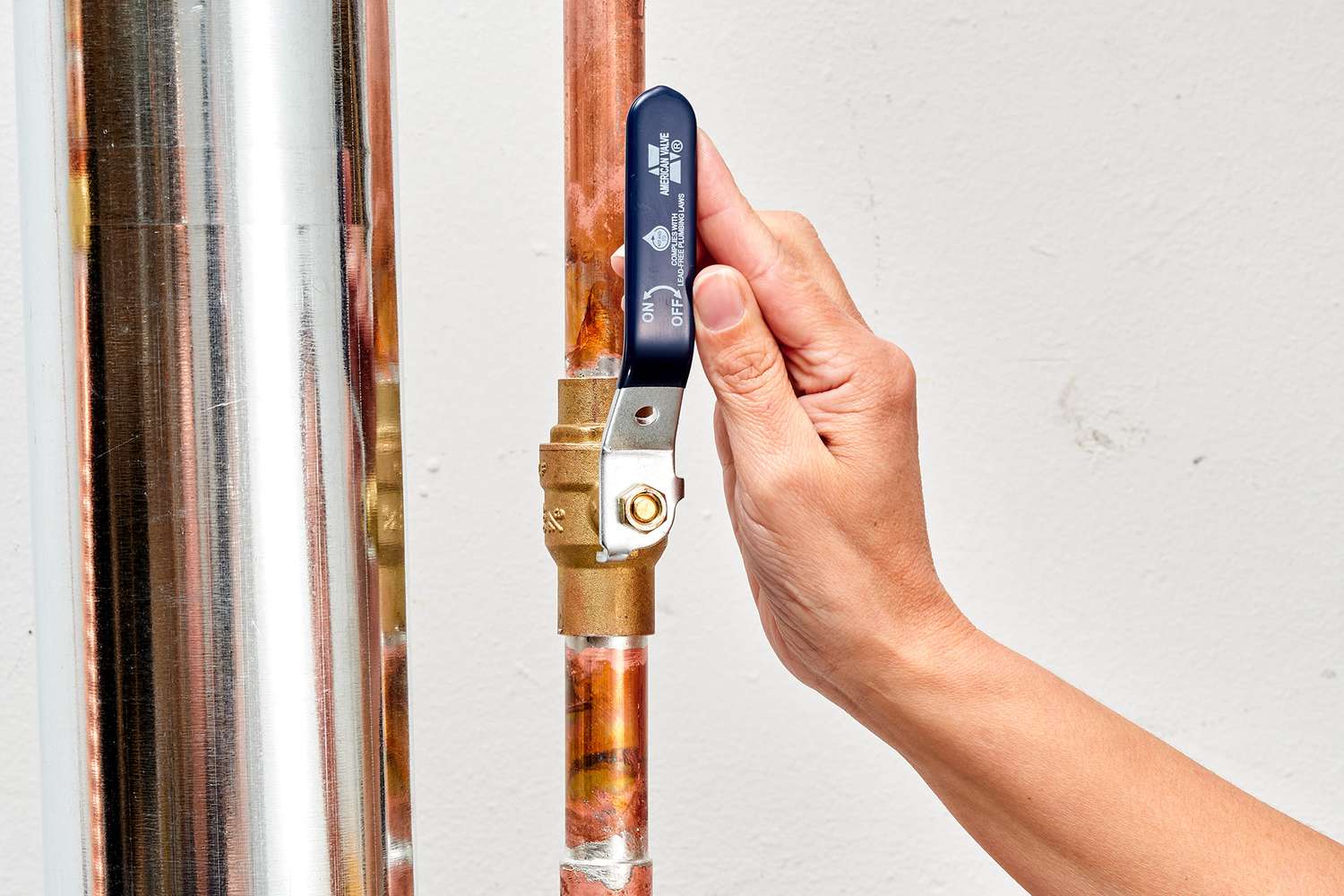
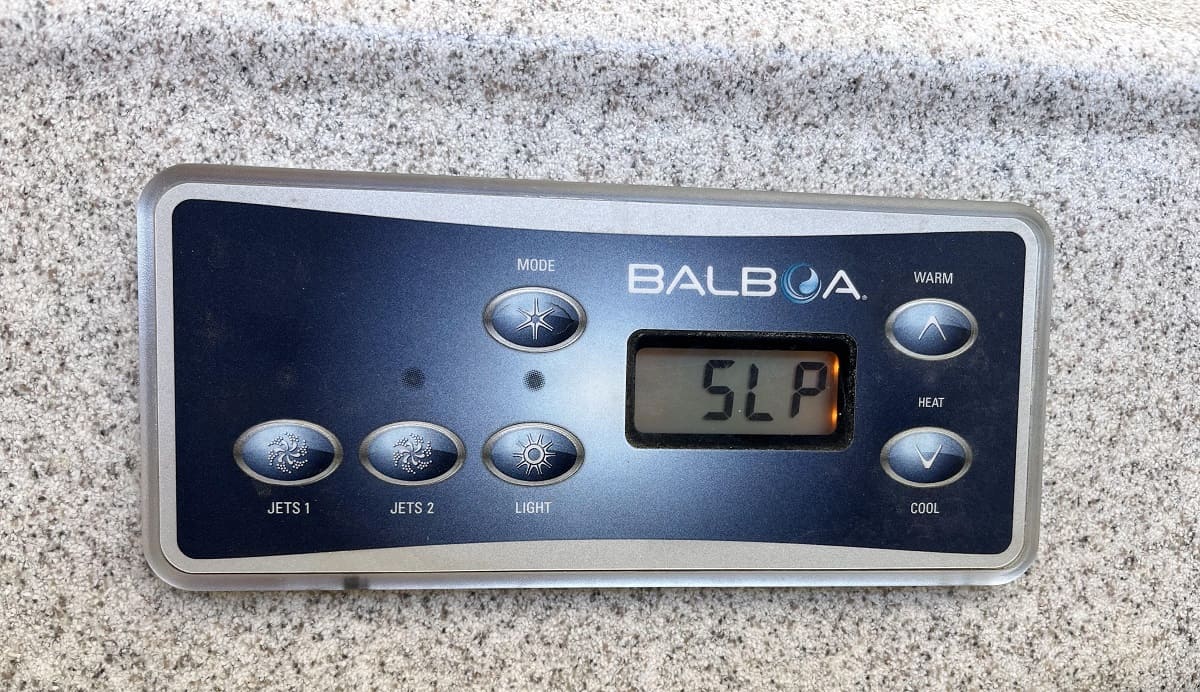
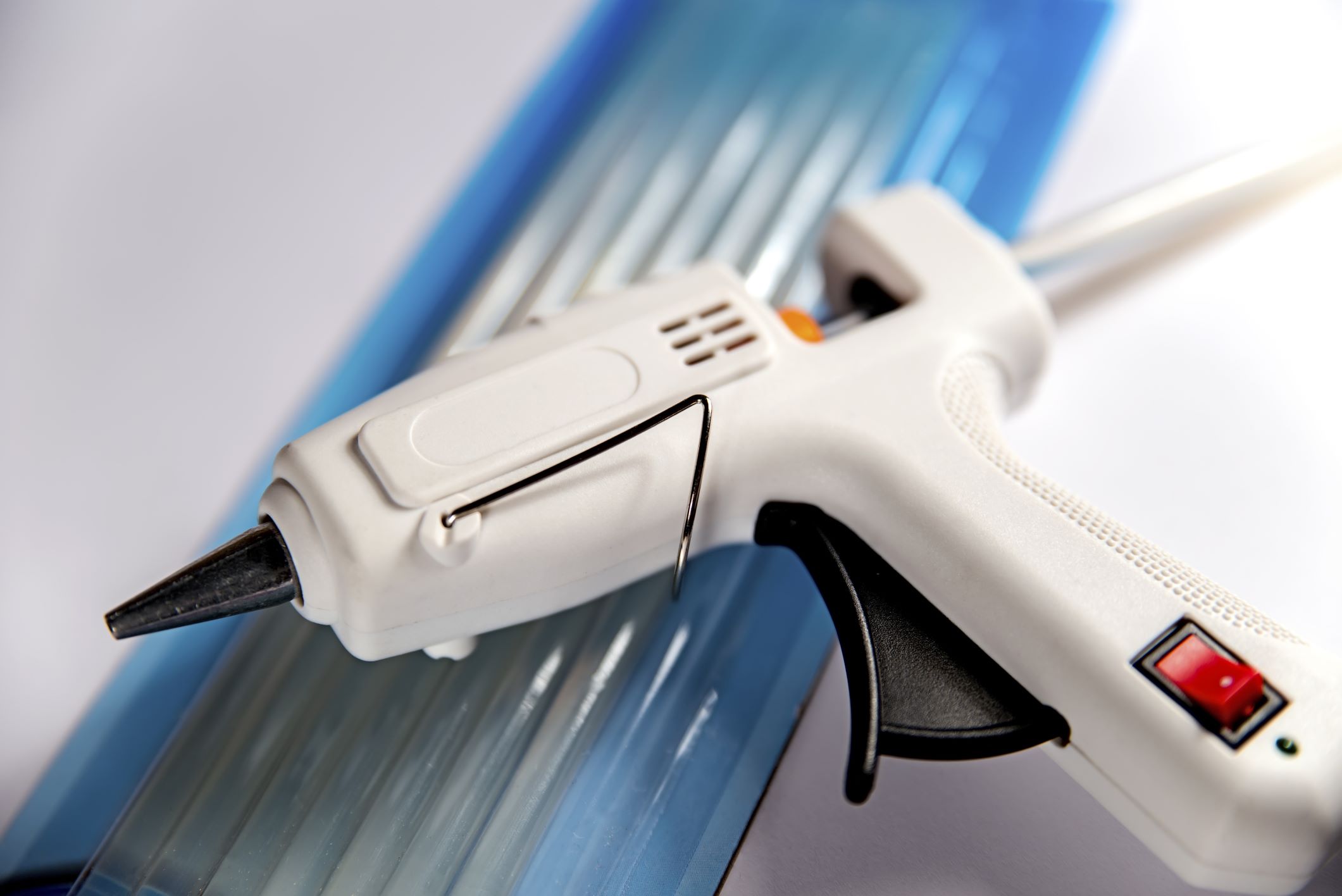


0 thoughts on “How To Reset Engine Hot AC Off”